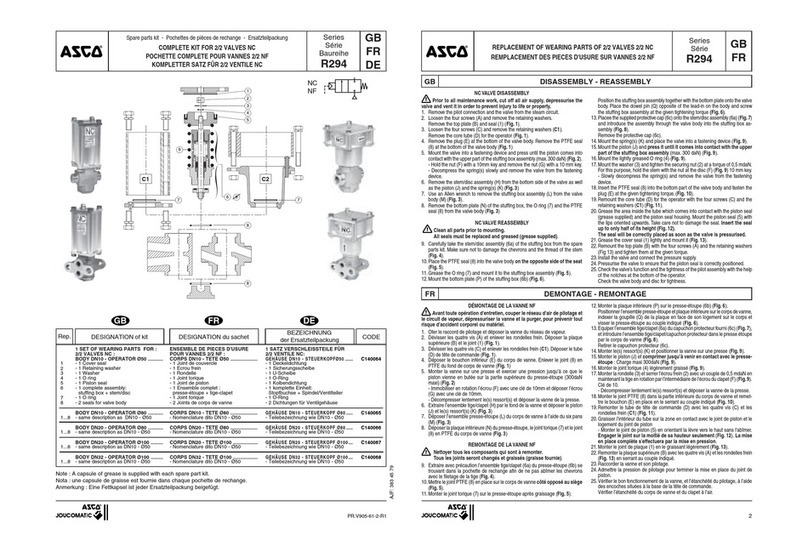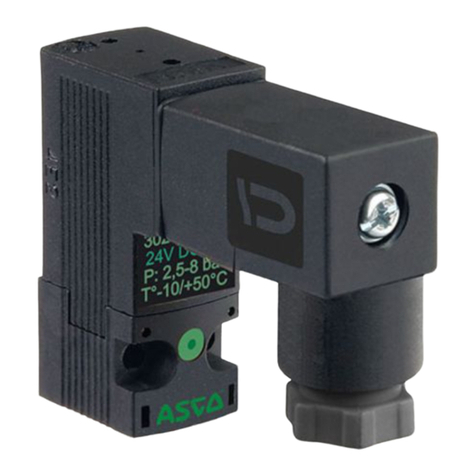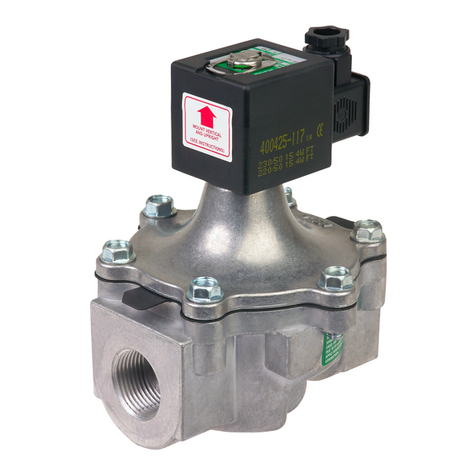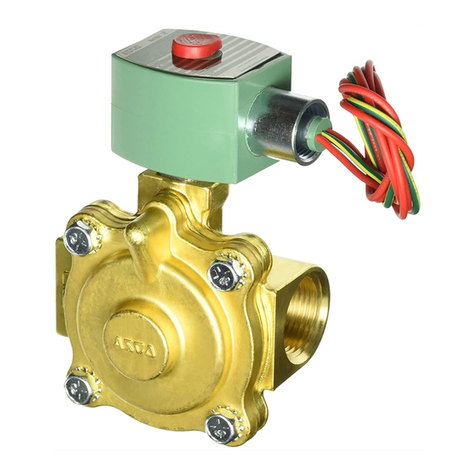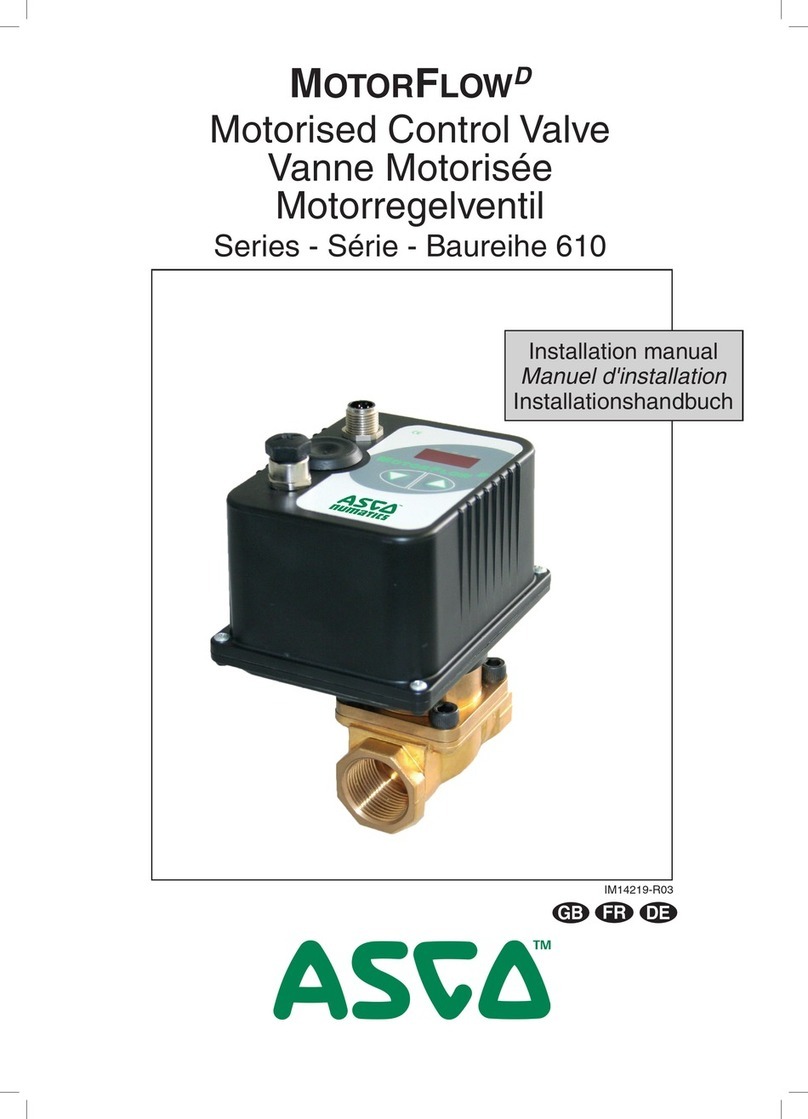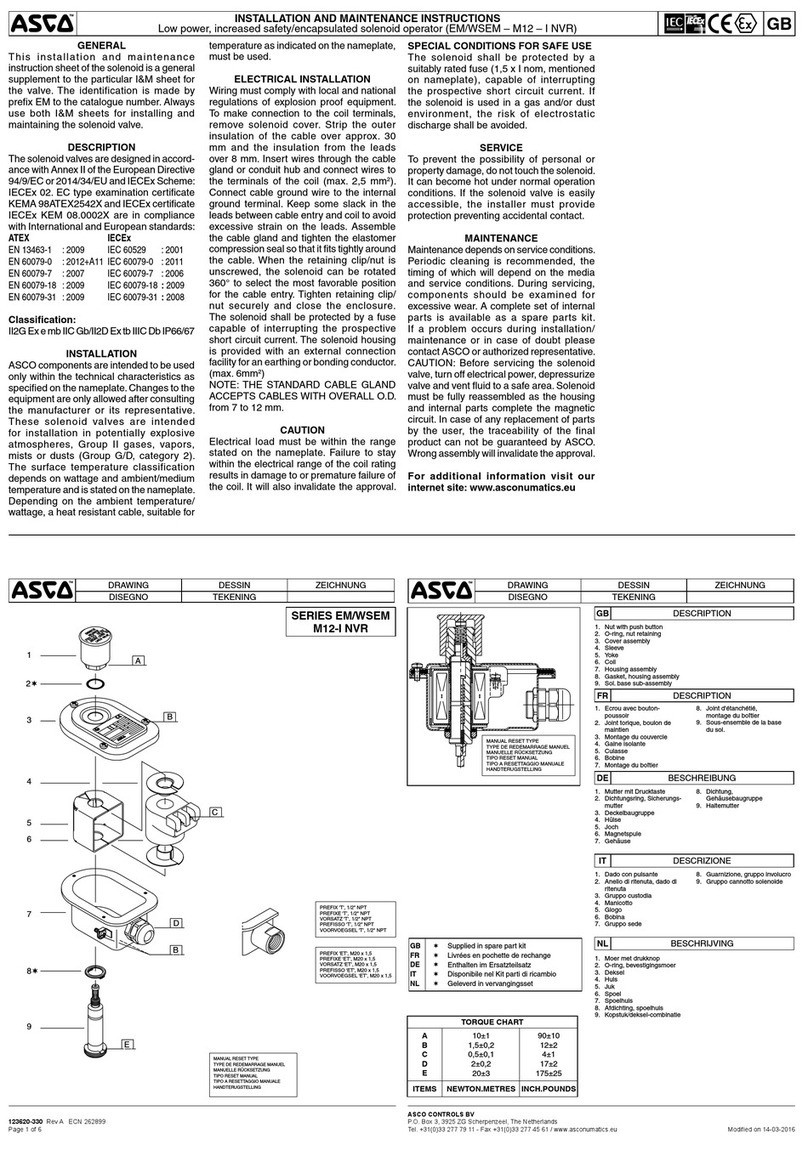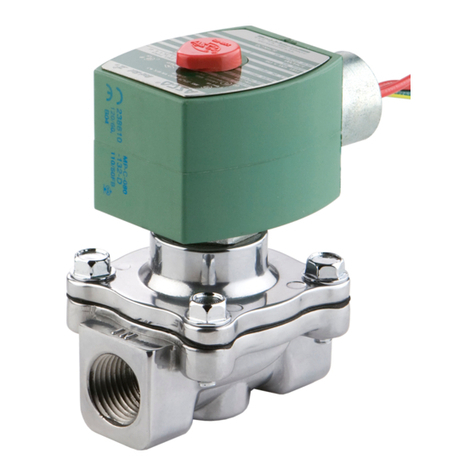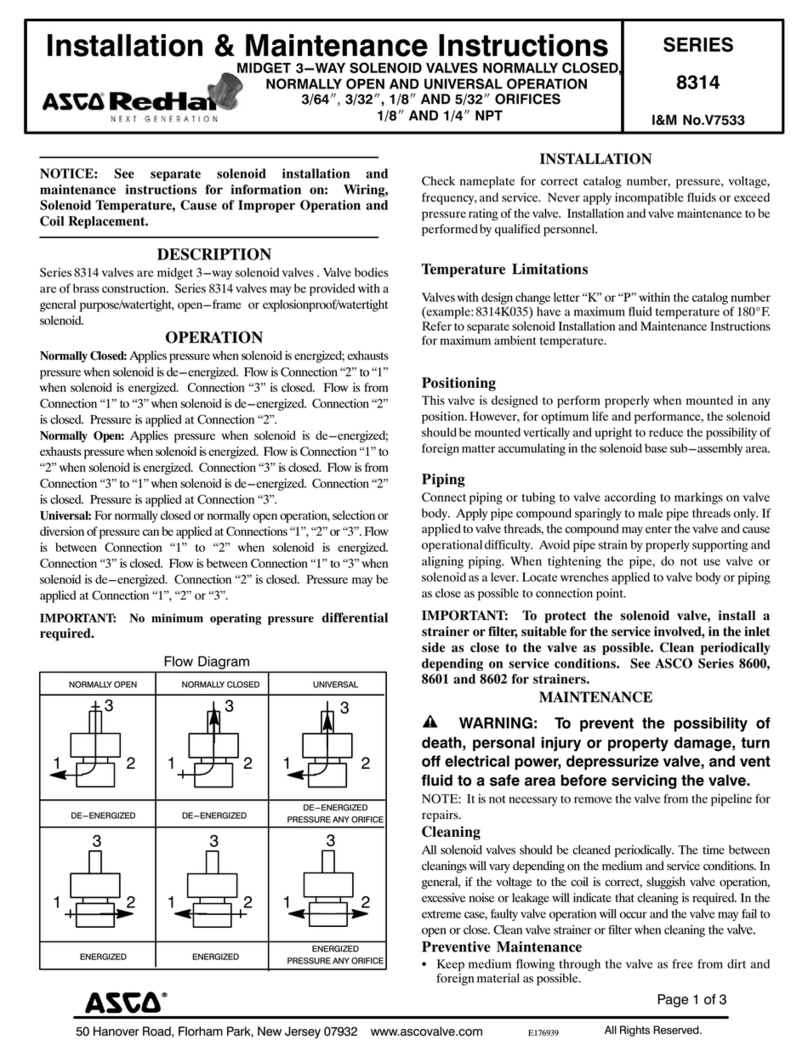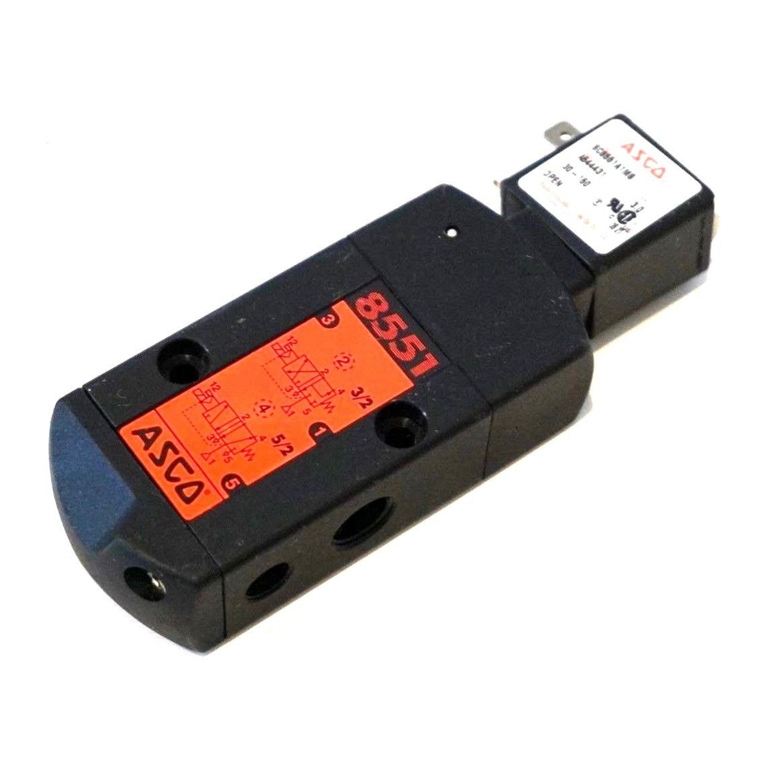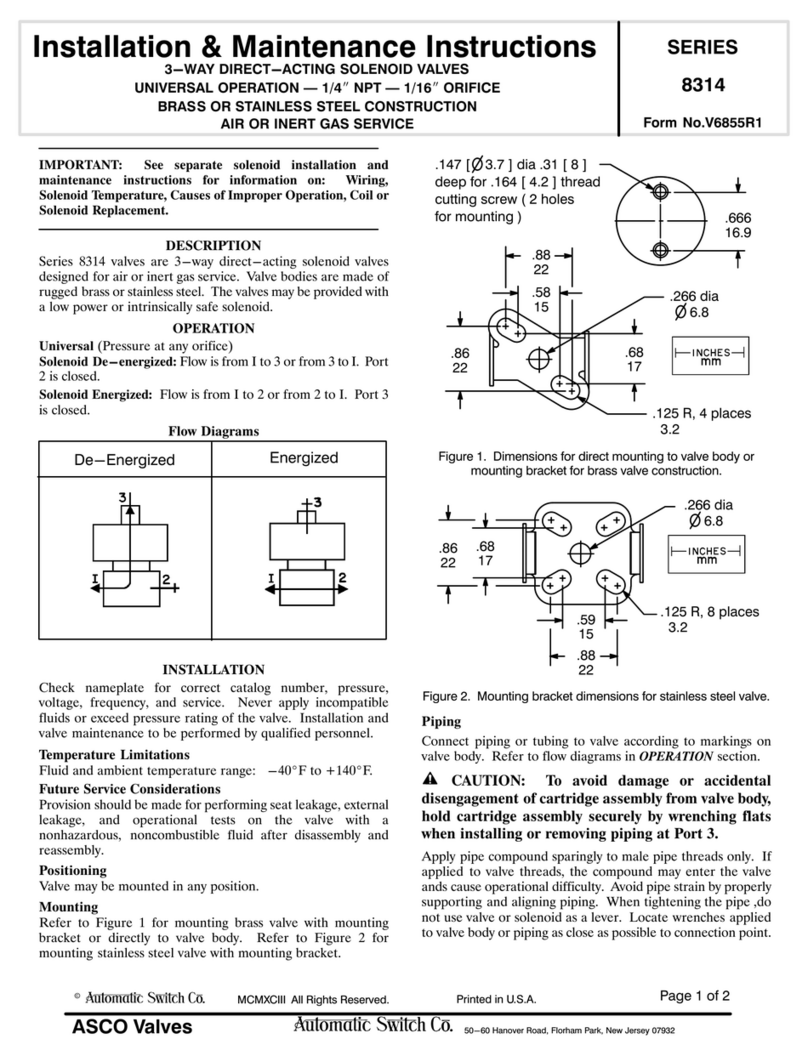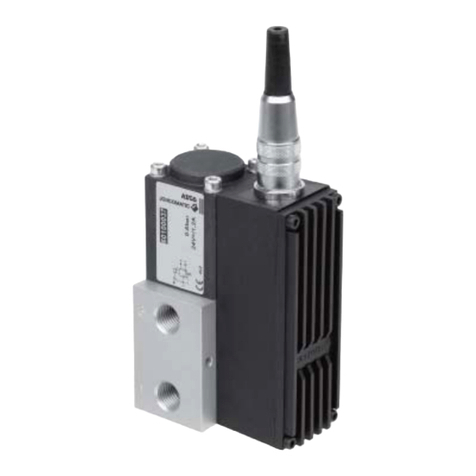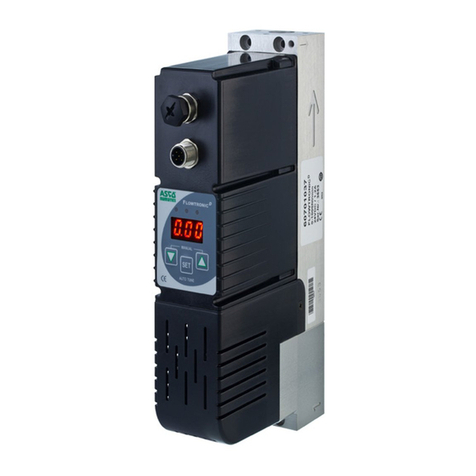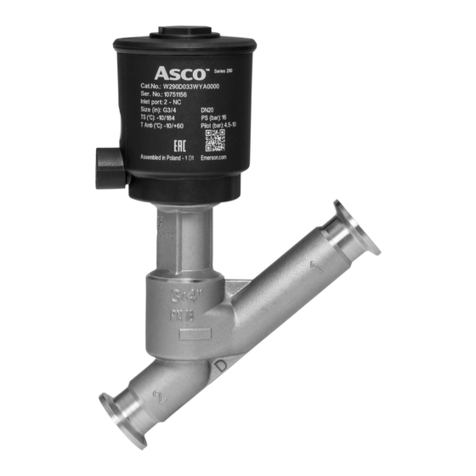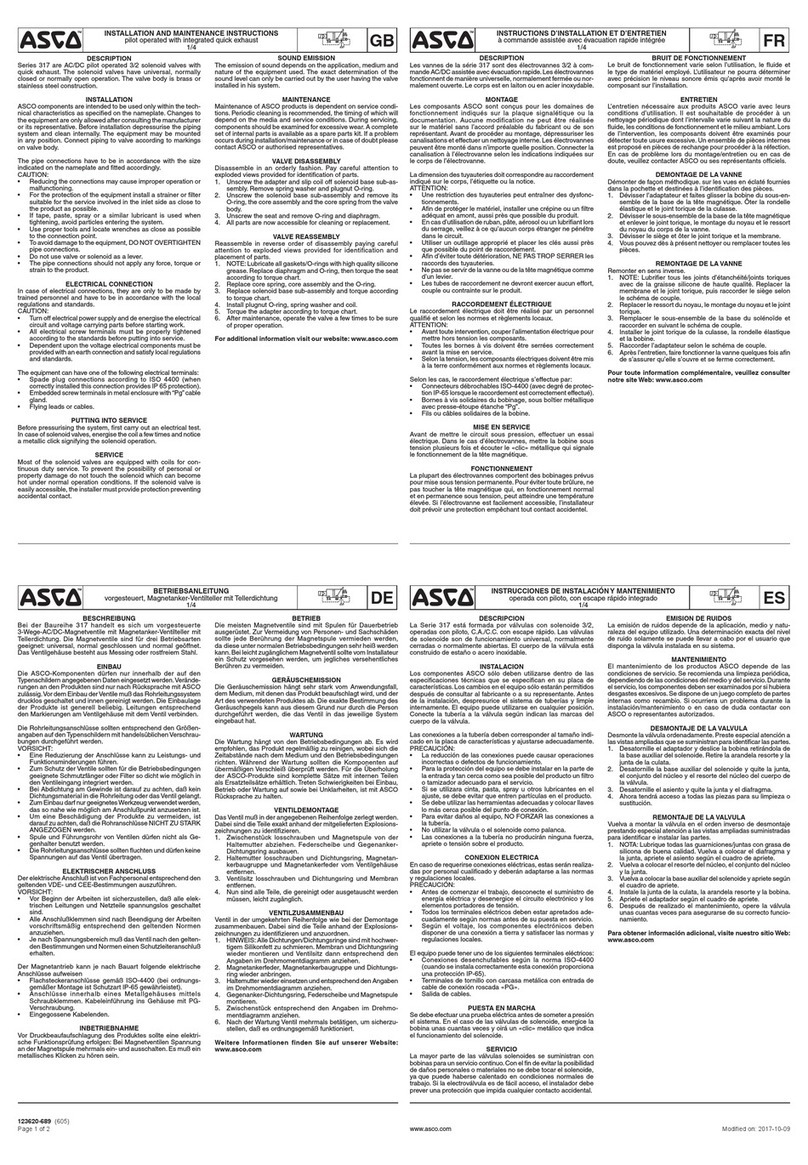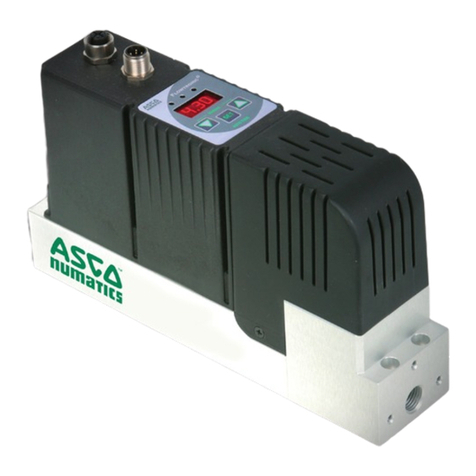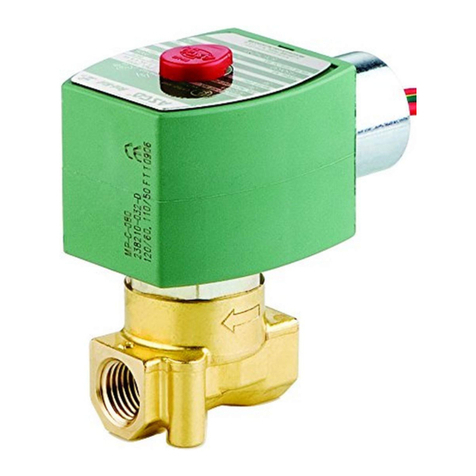
Page 2 of 3
I&M No.V6055R3
EASCO Valve, Inc.R50 Hanover Road, Florham Park, New Jersey 07932 www.ascovalve.com
Wiring
Wiring must comply with local codes and the National
Electrical Code. Housings for all solenoids are provided with
accommodations or connections for 1/2 inch conduit. The
general purpose solenoid enclosure may be rotated to facilitate
wiring by removing the retaining cap or clip.
CAUTION: When metal retaining clip disengages, it will spring
upward. Rotate coil to desired position. Replace retaining clip
before operating.
NOTE: AC and DC solenoids are built differently. To convert
from one to the other, it is necessary to change the complete
solenoid, including the plugnut/core tube sub---assembly and
core assembly.
Solenoid Temperature
Standard catalog valves are supplied with coils designed for
continuous duty service. When the solenoid is energized for a
long period, the solenoid enclosure becomes hot and can be
touched with the hand only for an instant. This is a safe
operating temperature. Any excessive heating will be indicated
by the smoke and odor of a burning coil insulation.
MAINTENANCE
WARNING: To prevent the possibility of death,
personal injury or property damage, turn off
electrical power, depressurize valve, and vent
fluid to a safe area before servicing the valve.
NOTE: It is not necessary to remove the valve from the pipeline for
repairs.
Cleaning
All solenoid valves should be cleaned periodically. The time between
cleanings will vary depending on the medium and service conditions.
In general, if the voltage to the coil is correct, sluggish valve operation,
excessive noise or leakage will indicate that cleaning is required. Inthe
extreme case, faulty valve operation will occur and the valve may fail
to open or close. Clean valve strainer or filter when cleaning the valve.
Preventive Maintenance
SKeep medium flowing through the valve as free from dirt and
foreign material as possible.
SPeriodic exercise of the valve should be considered if ambient
or fluid conditions are such that corrosion, elastomer
degradation, fluid contamination build up, or other
conditions that could impede solenoid valve shifting are
possible. The actual frequency of exercise necessary will
depend on specific operating conditions. A successful
operating history is the best indication of a proper interval
between exercise cycles.
SDepending on the medium and service conditions, periodic
inspection of internal valve parts for damage or excessive wear
is recommended. Thoroughly clean all parts. If parts are worn
or damaged, install a complete rebuild kit.
Causes Of Improper Operation
SFaulty Control Circuit: Check the electrical system by
energizing the solenoid. A metallic click signifies that the
solenoid is operating. Absence of the click indicates the loss of
power supply. Check for loose or blown fuses, open---circuited
or grounded solenoid, broken lead wires or splice connections.
SBurned---Out Solenoid: Check for open---circuited solenoid.
Replace if necessary. Check supply voltage; it must be the same
as specified on nameplate/retainer and marked on the solenoid.
SLow Voltage: Check voltage across the solenoid leads. Voltage
must be at least 85% of rated voltage.
SIncorrect Pressure: Check valve pressure. Pressure to valve must
be within range specified on nameplate.
SExcessive Leakage: Disassemble valve and clean all parts. If parts
are worn or damaged, install a complete ASCO Rebuild Kit.
Coil Replacement (Refer to Figure 1)
Turn off electrical power supply and disconnect coil lead wires then
proceed in the following manner:
1. Remove retaining cap or clip, nameplate and cover.
CAUTION: When the metal retaining clip disengages, it will
spring upward.
2. Slip the yokes containing the coil, sleeves and insulating
washers off the plugnut/core tube sub---assembly. Insulating
washers (2) are omitted when a molded coil is used.
3. Slip coil, sleeves and insulating washers from the yoke.
4. Reassemble in reverse order of disassembly paying careful
attention to the exploded view provided for identification
and placement of parts.
CAUTION: The solenoid must be fully reassembled as the
housing and internal parts are part of and complete the
magnetic circuit. Place an insulating washer at each end of
the coil, if required.
Valve Disassembly
Depressurize valve and turn off electrical power supply. Proceed
in the following manner:
1. Remove retaining cap or clip and slip the entire solenoid
enclosureofftheplugnut/coretubesub---assembly.
CAUTION: When metal retaining clip disengages, it will spring
upward.
NOTE: For valves with an Explosionproof/Watertight
Solenoid enclosure, the solenoid may be removed as a
complete unit by unscrewing the solenoid base sub---assembly.
2. Unscrew the valve bonnet with a special wrench adapter
provided in the Spare Parts Kit (special wrench adapter
Order No. 158---477---1).
3. Remove plugnut/core tube sub---assembly with valve bonnet
and bonnet gasket attached.
4. Remove core spring, core assembly and body gasket.
5. Unscrew end cap or manual operator assembly and remove
disc spring, disc, disc holder and body gasket.
6. All parts are now accessible for cleaning or replacement.
Replace worn or damaged parts with a complete Spare Parts
Kit for best results.
Valve Reassembly
1. Reassemble in reverse order of diassembly using exploded
views for identification and placement of parts.
2. Lubricate all gaskets with DOW CORNINGr111
Compound lubricant or an equivalent high---grade silicone
grease.
3. Replace disc holder, disc, disc spring, body gasket and end
cap.
IMPORTANT: Some valves have a disc with a conical point on
one side. Be sure that the conical point on the disc faces the
orifice in the valve body. Torque end cap (or manual operator
assembly) to 9010 inch---lbs (10,21 , 1 N --- m ) .
4. Replace body gasket and install core spring into the core
assembly. Install wide end of core spring into core assembly
first, closed end protrudes from top of core assembly.
